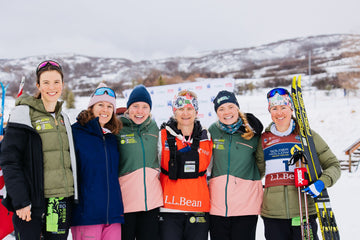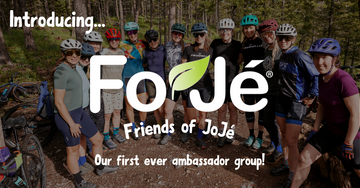
Cross country skiing existed as a mode of transportation in the Nordic regions of Europe long before it evolved into a competitive sport. The sport is literally referred to as Nordic skiing, so it’s easy to imagine the popularity of skiing in Scandinavia and surrounding European nations.
As a professional cross country skier based in Vermont, it’s awesome to see this ski culture firsthand on training trips to Europe. I recently returned to the US from a ski camp with my teammates in Oberhof, Germany, where many teams converge for off-season snow skiing in an indoor ski tunnel.
An indoor ski tunnel is conceptually like an ice rink, except with about a kilometer of groomed ski trails instead of a sheet of ice. The ski tunnel in Oberhof allows skiers to train on snow year-round. While the intensive summer dryland training of rollerskiing, running, and lifting is a fantastic way to gain fitness and even work on ski efficiency, the best part is transferring those technique changes made in the summer back to the snow.
There currently aren’t any viable options for on-snow cross country ski training in the continental US during the summer and early fall. However, there are several options in Europe. With two rollerski loops (paved summer ski trails on race terrain), a ski tunnel, and endless gravel trails linking the surrounding towns, Oberhof is the camp destination of choice for many European national teams.

While my Green Racing Project teammates and I were in Oberhof for our two-week camp in September, we overlapped with biathlon national teams from the US and France and cross-country national teams from Italy, Germany, and the Czech Republic, to name a few.
In general, skiers’ training approaches are pretty similar across the board, no matter where they’re from. Everyone is training hard; everyone is putting in the hours; nearly everyone does funny-looking technique drills with their poles above their heads. There’s no single secret method, just a combination of multiple interval sessions a week, distance workouts, and lifting. This typically adds up to between 650-1000 hours per year, with greater hours often correlating with how many years of training a skier has under their belt.
Despite the relatively universal approach to ski training, it’s always invigorating to see other nation’s skiers in action and to experience robust skiing cultures elsewhere. Oberhof is a mecca for cross country skiing, biathlon, and other winter sports. This upcoming ski season, Oberhof is hosting the Biathlon World Championships. Tens of thousands of fans will flock to the small sport-enthused town to watch the world’s best.
In the summer, tourists pay to watch skiers training in the ski tunnel. As I’d glance up to the balcony mid-interval, I’d see it lined with sightseers, cameras in hand. Running through the town square for an afternoon session, it was common to see athletes rollerskiing across the cobblestones on their way to the rollerski track.
Another interesting component of training abroad is handling nutrition and meals. Reading food labels in a foreign language and looking for American staples, like peanut butter, can be tricky. In our Vermont house of 10 skiers and biathletes, we order peanut butter by the 35-pound tub, so you can imagine how quickly we went through the about quarter-pound jars we managed to find in Germany. I had obviously packed the essential JoJé bars, SaltStick Race Ready Caps, and Lemon-Lime DrinkMix tub, so I didn’t have to worry about finding training fuel and electrolytes in Oberhof.

My team rented an apartment with a kitchen, so we took turns cooking dinners. Our go-to travel dinners typically ranged from pasta to curry. Other than spending longer than usual perusing the grocery-store aisles, wondering which sausage looked better based on the handful of German words I do know, it was surprisingly easy to find staples and great produce for meals.
The fun part of training in another part of the world is trying the local cuisine and specialties; in Oberhof, there was a wide variety of sausages, so we’d incorporate these into many lunches and dinners. There were also ample muesli options, which was perfect for breakfast. Chocolate-dipped rice cakes were a personal favorite of mine, and I made sure to buy a few extra packs for the travel home. As it turns out, Trader Joe’s carriers a version of these rice cakes!
Regardless of where you’re training for your next race or big goal, it’s key to take care of your body with proper nutrition. This can become a challenge in new places when unfamiliar with the food options – summer or winter. I’ve found that doing my best to stick to what I’m used to while incorporating local foods is a good way to ensure I’m adequately fueling myself for intense training. To take out any guesswork with training fuel, I’d recommend packing your favorite products. Having JoJé bars and SaltStick electrolytes with me made me feel confident that I’d have what I needed to train and recover optimally. With this peace of mind, I could fully focus on skiing, dialing in technique changes on snow, and getting pumped for the quickly approaching ski season!
With snow now on the ground across the country, I'm ready to transfer my summer gains to the winter trails!






